The keys to successfully eradicating pests is early identification and persistent treatment
People are often taught to identify spider mites only by the presence of fine webbing…but there is another type of plant-damaging mite that does not produce webbing: the false spider mite – scientific name: Brevipalpus californicus (Banks).
The (true) spider mite produces fine webbing – scientific name: Tetranychus urticae Koch
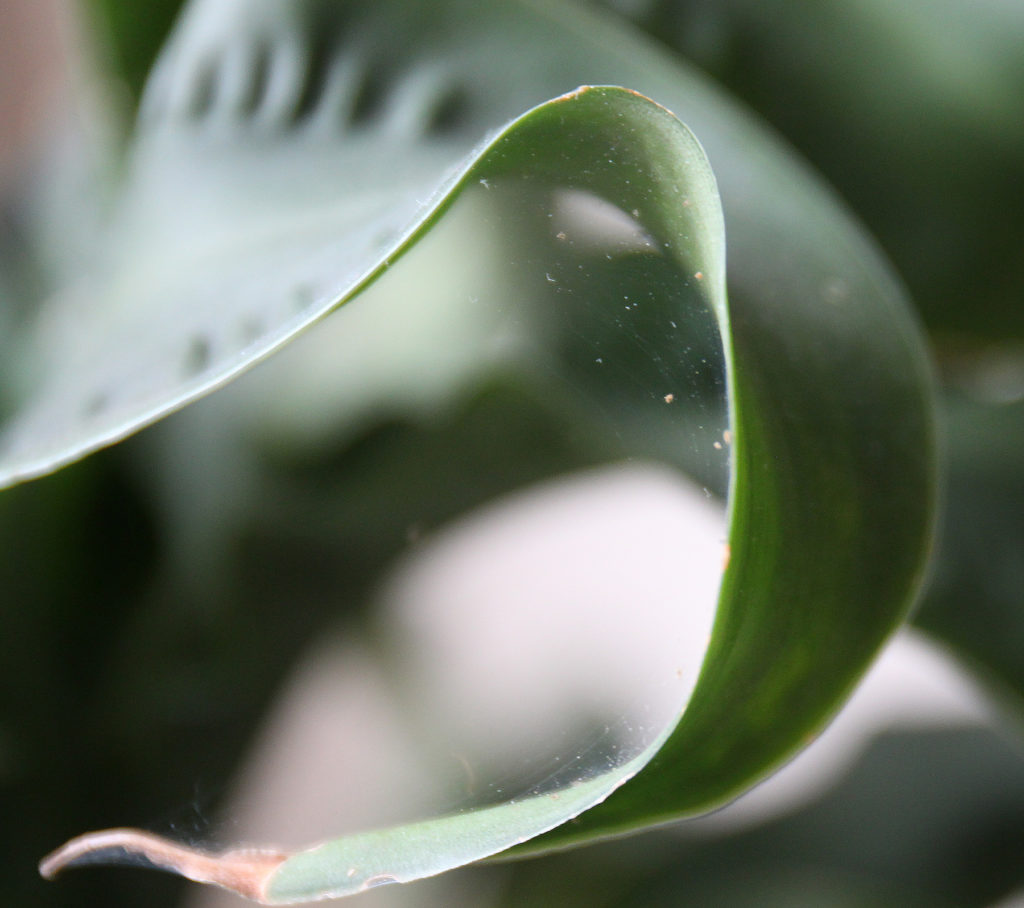
More Houseplant Pest Resources:
– Thrips (Photo Gallery and Treatment Methods)
– Scale (Photos and Treatments)
– Mealybugs (Photos and Treatments)
This Alocasia is infested by the no-web false spider mite, Brevipalpus californicus (Banks).
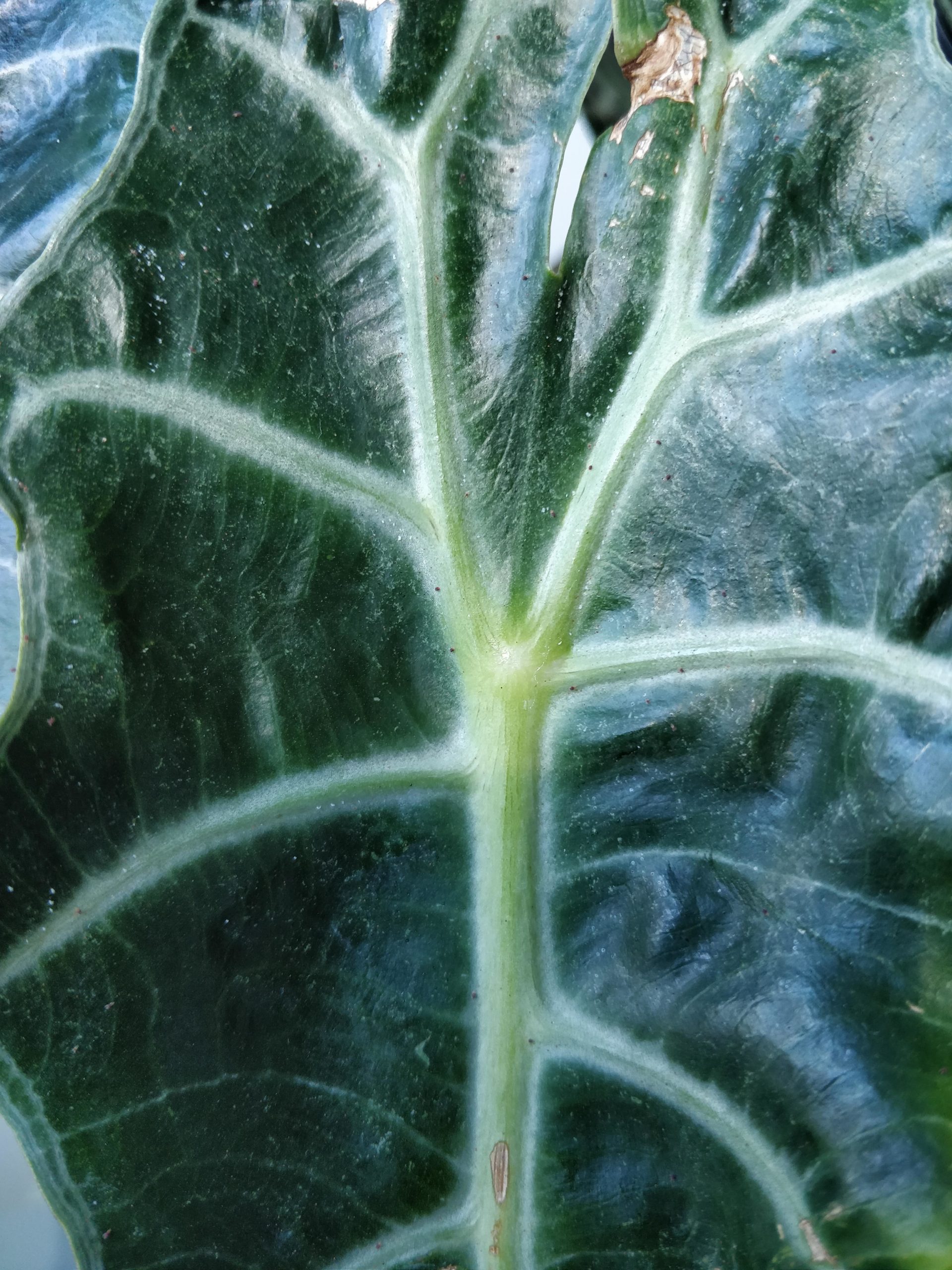
Despite this technicality, the point is both are damaging and unwanted on your houseplants.
First, it’s helpful to know which plants are PRONE to spider mites. I am extra vigilant with these plants – constantly inspecting them:
• Palms
• Alocasia
• Maranta (and sometimes Calathea)
• Crotons
• Ficus (usually fiddle leaf fig)
Second, you can learn to identify the actual insects – like the adults and the eggs – and not just the larger visible damage they leave behind.
Look how small they can be on a fiddle leaf fig:
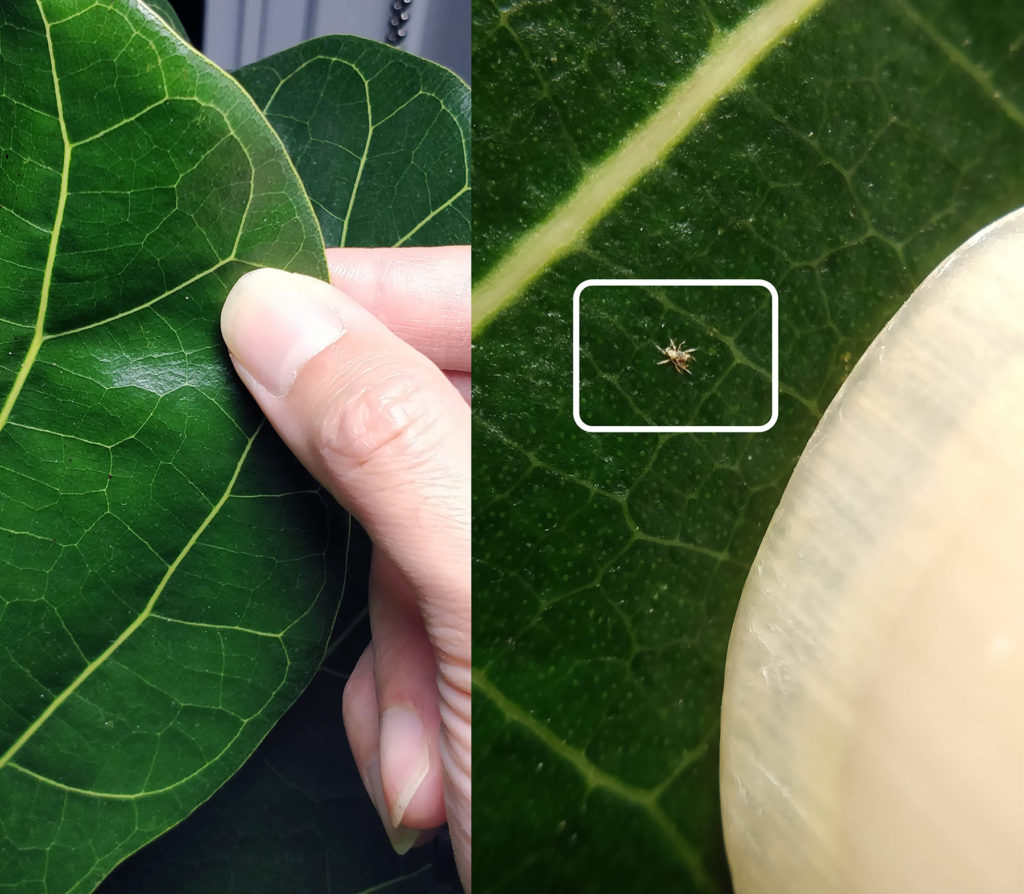
Let’s get really close to an Alocasia to see some adults and eggs:
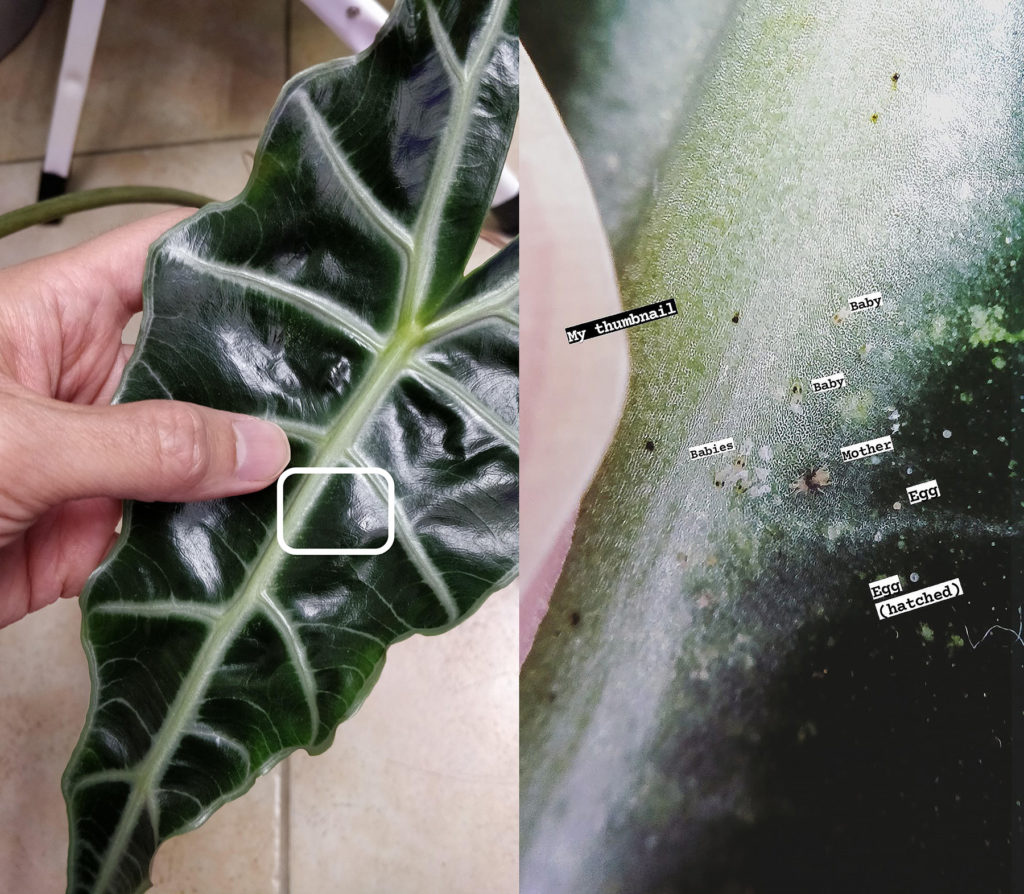
How to Fight Spider Mites
This is just how I like to deal with them – I use two methods to control their population.
- Physical Removal: with tape or a lint roller (if the leaves are tough enough) – this is something you can easily do on a frequent basis. You can chip away at them on a daily basis if you wanted.
- Insecticidal Soap Spray: on a roughly weekly basis, I take the plant to the shower and do a more thorough spraying to get at the insects I cannot easily see.
- Repeat, repeat, repeat. Spider mites (or any pest) will rarely be completely eradicated in one treatment. Expect to be dealing with them on an ongoing basis for several week, even months.
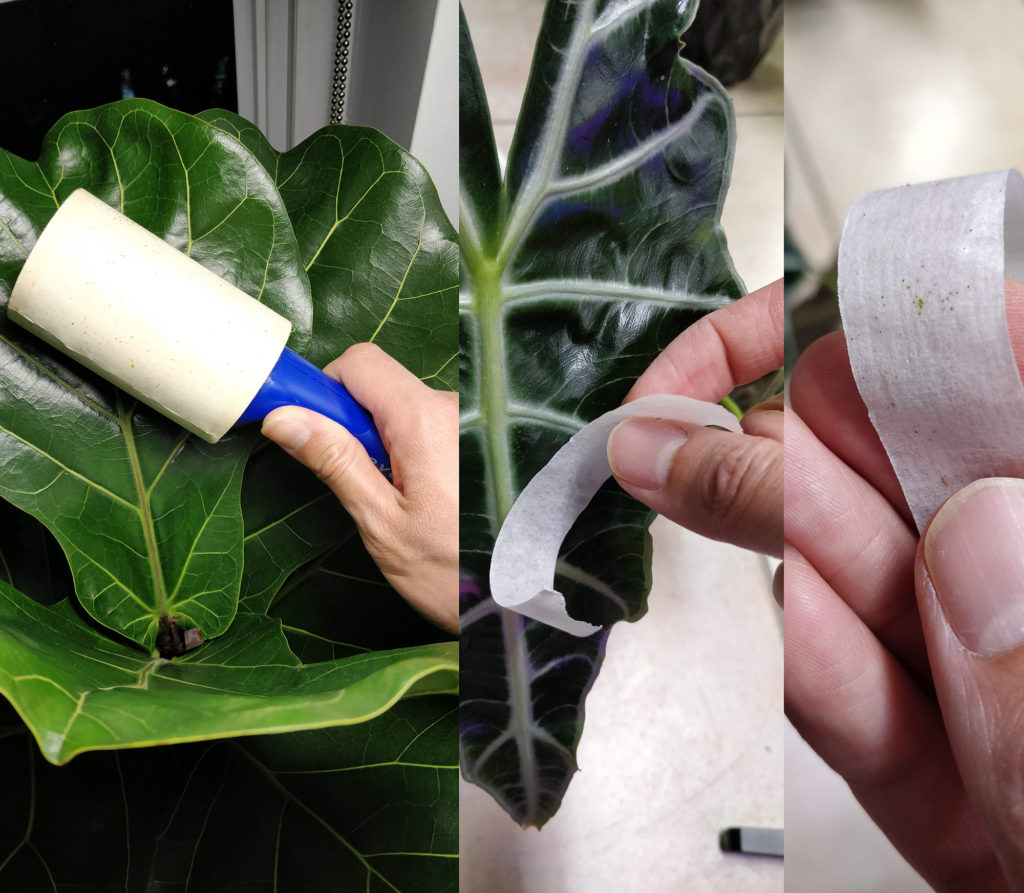
I hope this was helpful – as the photos show, I have had to deal with spider mites a few times! It’s just a part of owning many houseplants.
If you’re looking to learn a smarter approach to houseplant care – understanding what really matters, check out my online course:
‘Essentials of Houseplant Enjoyment’
Or my book ‘The New Plant Parent’ (signed copies available HERE)
Need personalized plant help? Join my Patreon community and I’ll be your Plant Advisor on your plant journey!

